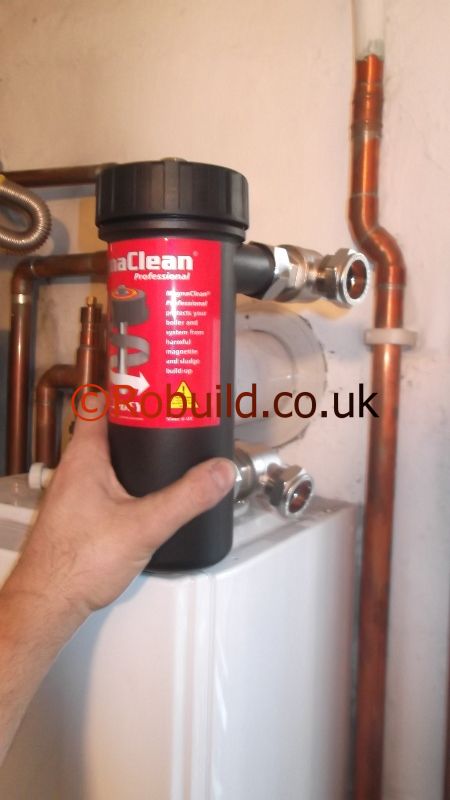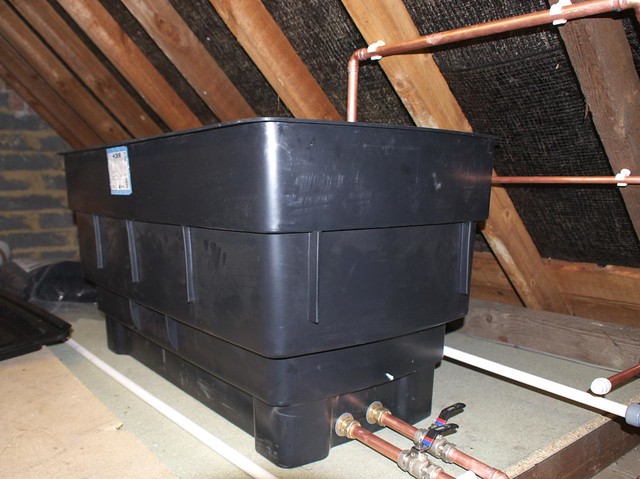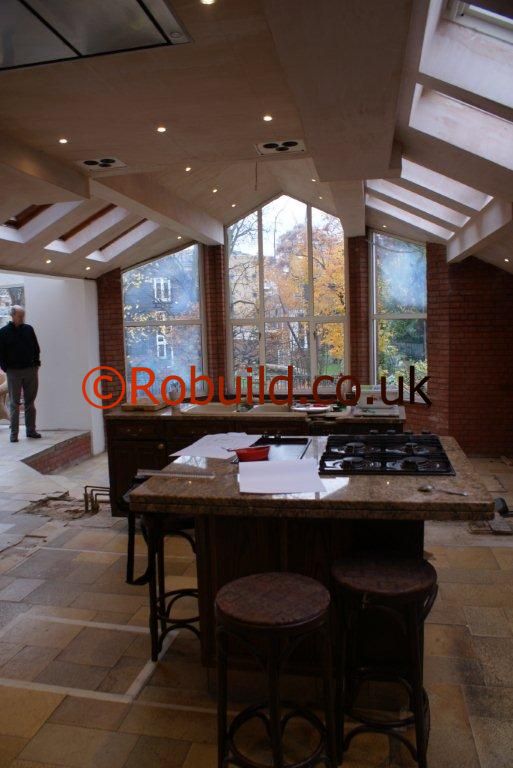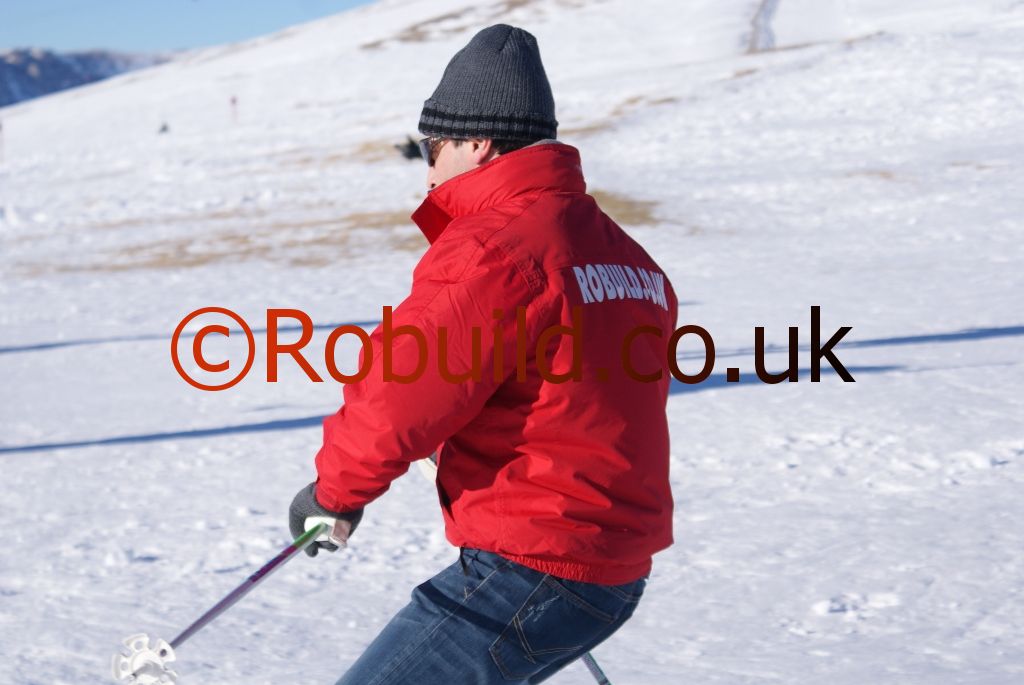• The difference between hard and soft water
• The problems of scale and scum
• The benefits of hard water
• Testing for water hardness
• The various treatments for hard water
• Installing a plumbed-in water softener

Water supplied for domestic use is purified to make it bacteria-free—and therefore fit for human consumption— by efficient filtration and storage, as well as by additives and treatments introduced by the water authorities. But even this water contains impurities, in the form of certain amounts of dissolved mineral salts that are referred to when we talk of the hardness or softness of water. The concentration of these mineral salts depends largely on the type of rocks and terrain through which the water passes before entering the supply system itself.
What is hard water?
Rainwater which falls in open country and on to insoluble rock such as slate or granite remains more or less mineral-free. Surface water may, however, pick up organic waste products— notably peat which tends to acidify water. This water is usually soft. Conversely, rainwater which falls on to sedimentary rocks tends to permeate through these to emerge as ground water which has a high dissolved mineral content. This water is relatively hard. But there is another side to consider. As rainwater falls to earth it picks up quantities of gases and pollutants which acidify it slightly. The most significant of these acids generally is carbonic acid (soda water), produced by the solution of atmospheric carbon dioxide; but in heavily industrialized areas, with a far greater proportion of sulphur dioxide in the immediate atmosphere, rain can actually fall as a very dilute form of sulphuric acid. The mildly acid rainwater falls on, and is absorbed by, different rock strata during which time it reacts with minerals in the rocks themselves. It then either disgorges into rivers, lakes and reservoirs or collects underground and is pumped to the surface.
In regions where there is a high proportion of calcium and magnesium carbonate in the rock—found in limestone and chalky soil, and dolomites respectively—the carbonic acid in the rainwater reacts with the carbonates to produce bicarbonates. It is these that make the water obviously ‘hard’ and pose the greatest threat to domestic water systems. At low temperatures, the bicarbonates are readily soluble in water and remain so until they reach your system. But when this water is heated, they begin to decompose into insoluble carbonates which are deposited on any surface at a temperature past the critical point.
This is most readily noticeable as ‘fur’ in a kettle. Because it can be removed by boiling, such hardness is referred to as temporary hardness or alkaline hardness and causes the greatest majority of problems associated with water quality—heating elements lose their efficiency, and pipes become blocked. Some of the other more stable metal salts which become dissolved in water do increase its corrosive properties and have to be removed for specialist industrial processes. But in domestic installations non-alkaline hardness, or permanent hardness (which cannot be removed by boiling) is not normally much of a problem.
However, sulphate hardness can affect the performance of soaps and detergents—even in areas that do not suffer from carbonate hard water. The addition of a small amount of washing soda reduces this. Also, all types of water produce a certain amount of corrosion in contact with, for example, the metal of a central heating system. The black sludge you may have noticed after bleeding your radiators is, in fact, the black oxide of iron. Problems of this nature—not directly attributable to water hardness or softness—can usually be cured by adding a corrosion inhibitor to the system.
The problem of scale and scum
Scale is the build-up of particles of the bicarbonates released from hard water when it is heated. This precipitation begins at around 60°C and accelerates as the temperature is raised. It is for this reason that the first signs of scale are usually found in the kettle, which quickly becomes furred up; Unimportant scale of this sort can usually be removed by boiling up a dilute acid like vinegar or lemon juice together with water. And it can be prevented from gathering on the heating element by placing a few pebbles in the kettle. Much more serious is the effect of scale on hot water pipes and central heating systems: pipes become clogged, valves and pumps can jam, and boiler efficiency and life may be drastically reduced. And, as these effects are concentrated at the hottest parts of the system, this is where they can do the most damage.
Washing machines and dishwashers, too, have heating elements which can get covered with scale; this reduces their efficiency because the scale has to be heated before—and in addition to—the surrounding water. And of course, electric water heaters are particularly vulnerable to the effects of scale build-up. It has been calculated that boilers having a scale deposit of just 3mm require 15 percent more fuel than scale-free boilers. This figure can rise to a dramatic 70 percent when the scale layer reaches a thickness of 12mm. Scale formations can cause an objectionable amount of boiler noise— not unlike the creaks, groans and muffled ‘explosions’ that a furred-up electric kettle makes when heating. But more importantly, unless prevented (or removed, if possible) the scale build-up means a comparatively short life for the appliance and its related pipework.
Scum—insoluble soap curds formed when hard water reacts with, soap—is another common problem associated with water containing a high proportion of bicarbonates. It causes unsightly ‘tide marks’ around baths and sinks, can irritate the skin, and leaves clothes feeling rough to the touch. In fact, twice as much wash powder may be needed for a wash in hard water—and even then, the wash may not be as clean as it would be in soft water areas. These effects are also seen to a lesser extent with detergents—where china and glassware exhibit faint, but opaque, ‘drying marks’ for example.
Benefits of hard water
Pure water is tasteless. Hard water, on the other hand, contains dissolved are a clear sign. But i f your soap lathers easily and the water feels soft to the touch, you have soft water. Your water supply authority should be able to tell you a great deal about the water you receive, and may be able to test any water that comes from a private source not under their specific control. Plumbing companies who install water softeners may also be able to test the water for you.

Low cost, easy-to-use water hardness test kits are readily available from aquarist supply shops. These employ indicator chemicals and you simply count the number of drops needed to effect a colour change in order to obtain a very accurate hardness reading. Water hardness is measured in several different ways and three systems are in common use.
In scientific circles the measurement is based on parts per million (ppm) calcium carbonate—that is, the number of parts of calcium carbonate (Ca03) present in a million parts of water. The alternative two methods employ a degree system that is indirectly related to the ppm system, where hardness is based on parts per million calcium oxide (CaO). One of these systems originated in Germany and is referred to by the symbols DH or °dH. The other is the English system, referred to simply by the degree symbol (°), whose value differs from the DH system.

Confusing as this may seem, the relationship is in fact fairly straight-traces of many’ minerals which not only give it flavour but also supply tiny amounts of nutritional elements. Hard water is sometimes recommended for drinking, even though softened water tends to make better coffee and tea. Slight traces of common salt from the softening process (not necessarily detectable by taste) are not tolerated well by most types of garden plant and in any case it is not economical to soften water for this use. Most domestic water softeners are fitted in such a way as to allow drinking and garden water to bypass the softening system.
Testing your water
The DH degree is equivalent to approximately 18ppm (CaC03), the English degree to approximately 14ppm (CaC03). Treatments of hard water A number of possible options exist for the treatment of hard water. Some merely condition it, others actually soften it. The latest development is specifically intended to combat the scale caused by heating. Chemical scale inhibitors do not actually soften water, but instead stabilize the bicarbonates so that they do not form carbonate scale. Crystals of this type are encased in a plastics container and simply suspended inside the cold water tank which feeds the water heating system. This method is cheap but the crystals do need periodic replacement.
The same principle is applied in descaling units—small containers of crystals which are actually plumbed into the rising main piping. Versions of this device are available for use with chemicals specifically intended to counteract water containing too much iron or acid. Corrosion inhibiting solutions can be added directly to indirect heating systems. Use of these low-cost, non-toxic solutions prevents blockage caused by iron oxide sediment and inhibits the formation of scale. It also prevents the build-up of hydrogen (a by-product of the corrosion process) which is often mistaken for air when bleeding a radiator. Certain special additives help to prevent electrolytic corrosion— often an acute problem in central heating systems.
Most recent of the developments is the magnetic conditioner which does not actually change any of the chemical properties of the water, and therefore does not influence its taste and nutritional properties. The conditioner works by passing the water close to strong magnets. These are thought to alter the magnetic properties of the micro-particles enough to dissuade both scale and scum from forming in subsequent pipework and appliances. Magnetic conditioners have to be matched closely to expected flow rates and require quick maintenance by the householder perhaps twice a year, but are otherwise simply plumbed into a convenient section of the rising main using just two compression fittings. A particular benefit is the small size of the appliance.
Conditioners do not actually soften the water—for this you need a proper water softener. These work by actually removing bicarbonate salts from the water in a process known as ion exchange—the most thorough solution to the problems caused by hard water. Very simply, ion exchange in a water softener takes place when the electrically-charged bicarbonate ions in the water pass over a catalyst known as the resin bed.
Here, they change places with ions of sodium and thereafter remain attached to the resin bed while the sodium ions pass harmlessly into the water. Eventually the resin attracts enough bicarbonate ions to become clogged and it must then be flushed clear with brine solution—which is powerful enough to overwhelm and displace the bicarbonate ions. In all makes of modern water softener this recharging takes place automatically, using salt from a built-in reservoir. Water softeners are available with different capacities, suited to the amount of water consumed and the hardness locally. There is even a portable model available from one manufacturer.
Current advanced models are fairly compact and incorporate automatic timers which open and close valves to control the ‘flushing’ process or resin regeneration programme. They can be timed to do this during the night—when there is no call for water—as two hours or so are required for the regeneration cycle when only hard water is available. A typical domestic installation requires resin regeneration about twice weekly, using between 1kg and 3kg of salt for the purpose depending on the unit’s capacity.
The salt reservoir needs topping up every month or two and, apart from occasional servicing, this is the only attention the softener needs. Latest models employ a microchip console to control the valve working the regeneration cycle.
Installing a water softener

The best place to instal a water softener is in a kitchen or laundry room—-or wherever the rising main first emerges—but leaving enough pipework for the installation of branch pipes to supply a tap or two for drinking and garden use. The supply will have to be disconnected for at least two or three hours, so lay on supplies of drinking and cooking water before commencing and avoid using any taps in the house except sparingly if there is a water storage tank in the loft.


















